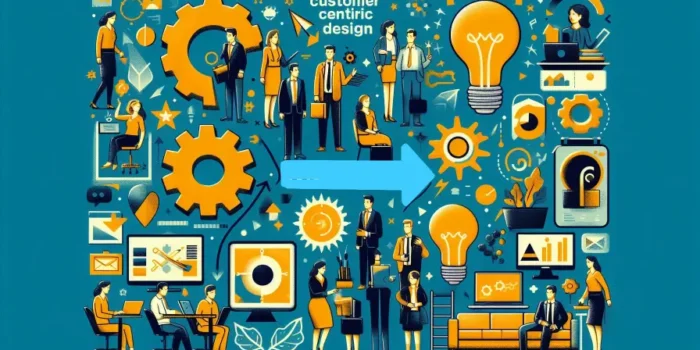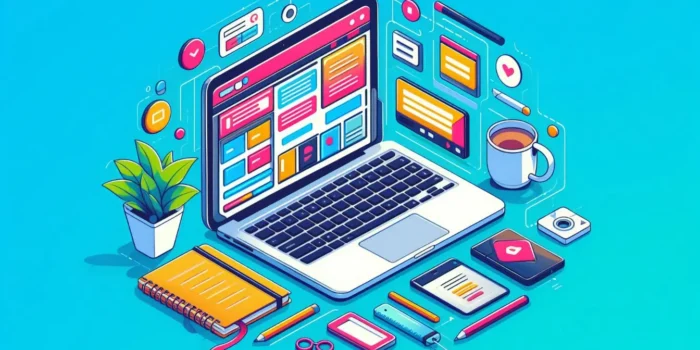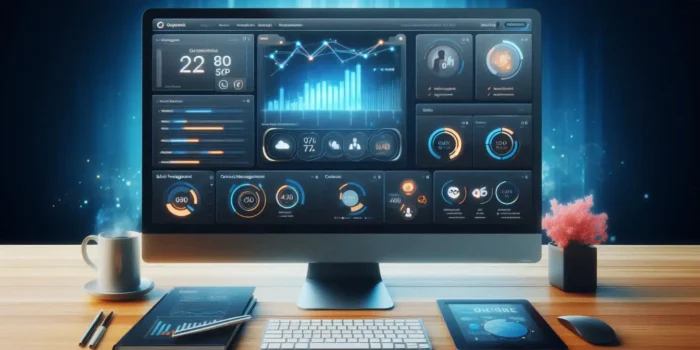The mobile app development market is continuously developing. Advancements in technology, customer demands, and a wide range of other influences significantly affect developments in mobile apps. It is arguably the most critical aspect of performance in this space to keep up to date with the new developments. To best support their consumers, mobile application resellers need to stay up with emerging trends. The same goes for app creators and manufacturers ready for mobile development to push their products to the next stage.
For 2024, we have too many hopes, don’t we? Everybody wishes to ignore that 2020 has ever existed. We should’ve only missed this year. But since that’s impossible and 2020 wasn’t as bad for IT businesses as it was, for example, for gastronomy, let’s look at what is most likely preparing for the demand for smartphone applications next year. Over the years, the hardware has changed, as have the sensors and Internet availability.
Every year brings its share of technology developments that expand the boundaries of what can be done in the production of mobile apps. It is vital to look at what to expect next year if you want to keep up with the mobile app industry, and this article will help you with it! From the evaluation of GPRS to 5G, with the first wave of mobile technologies, smartphones were empowered to work more efficiently as compared to what they were able to do. And for websites, they may have been the same, but they were never able to catch up with the portability of mobile apps. In 2021, we expect these to be among the top factors affecting the growth of mobile apps.
1. Internet of Things (IoT) App Integration
The IoT is far from becoming a new idea. People have become used to utilizing technologies to enrich their daily lives. In 2021, the worldwide Internet of Things industry is projected to hit $222 billion. Of that estimate, $161 billion would come from tech, including smartphone applications.
In IoT, smart homes are the farthest we have come, smartphone applications have made that, but that’s going to get beyond this in 2021. The smartphone applications produced by the specialist IoT development company would support both customer and industrial IoT. Amazon’s dash button crashed when they wanted to substitute what was more feasible, buying stuff you need online. It’s almost challenging to balance the degree of comfort we have in using a smartphone app with actual standalone buttons.
2. Augmented Reality
Technologies for Augmented Reality (AR) are not new, but every year they get improved and more widespread, achieving exponential levels. Mobile games such as Pokemon GO made it so popular that thousands of people communicated with imaginary items and monsters that may not exist but were seen on the computer due to AR. In business-critical fields such as defense, health, training, industrial maintenance, and more, applications for this technology will go much further.
Police officers in China, for example, are beginning to wear smart glasses to recognize offenders by face-recognition apps and identify criminals in the crowd. They are also experimenting with it, though, and working in the war against crime to manipulate AR. AR usage in social matters is an exciting situation, and it will undoubtedly hold an increasingly significant position.
Apple recently launched ARKit 4, based on both the front and rear sensors, to boost augmented reality features in custom applications. Enabling iOS developers to apply elements to the camera’s view in a way that allows the physical world seems to be populated by such factors. This has numerous implications where real-world objects are in gaming and business information systems.
3. Mobile Wallets
There was a time when we used to pay in cash for anything. Credit and debit cards turned up, so we didn’t have to carry our pockets with many bills. Yet here we have a common factor, the wallet. Until now, the thing we usually have in our pockets hasn’t changed. Your cell phone will be the pocket of the century, and the future is beginning to become the current.
In usage and acceptance, mobile payment services such as Apple Pay are increasing. Around 36 percent of global mobile users will use a mobile payment app by the end of this year, according to eMarketer. Maybe China, where the upper and middle classes use mobile wallets for their everyday transactions, is one of the most advanced markets in this context, but the word is that even some beggars use the popular WeChat app to ask for money.
Mobile developers must be ready to add mobile payment features to their toolbox in this context. Apple Pay is there, but that’s only one of the rising mobile-ready payment gateway markets. Also, as something becomes more common, related features and capabilities increase in value, as in any other topic. For example, for mobile app developers, elements such as biometric and multi-factor user authentication of applications should be considered.
4. Wearables
We recommend that you add the features into your mobile app if your app comes under the form incorporated into a wearable system. To get a better view, wearables are the next big trend; imagine how it will have been if WhatsApp let it go and won’t show updates on the Apple watch. Development of iOS apps and growth of watchOS go hand in hand; find experts, and you can incorporate whatever you want.
If it isn’t properly integrated with the smartphone app, we do not imagine wearables going much further. If you don’t take maximum advantage of wearables’ capabilities, the market will leave you behind. In watchOS and wear, along with the creation of android and iOS applications, you will need to spend a little. Go for it if you can make successful usage of smartphone devices and wearables.
5. Biometric Authentication in Mobile Devices
It is a popular feature in new mobile devices to use your body to show that you are yourself. Several study surveys indicate that more than 60% of mobile shipments have fingerprint scanning capabilities, continuously increasing. Every year, this authentication system method is expanded, creating a quicker and more powerful scanner that is now also installed below the computer.
Biometric security is also mainstream on mobile devices. It is used to unlock your phone and log into your bank account or some other digital-sensitive room where your data is supposed to be secured. It certainly has its vulnerabilities, like every other protection measure in the mobile environment, but biometrics paired with classic authentication methods reflect state-of-the-art security of authentication. In their smartphone applications, mobile developers must use technology such as FaceID or TouchID functionality.
6. 5G Technology
The next generation of cellular networks is reaching the door, and by 2021/22, it is anticipated to enter the entire industry. Experimental testing and results show that 5G is quicker, more comfortable, and more efficient than 4G, using much less power. This is why smartphones, such as the iPhone 12, are being built for this brand-new technology ready for its launch.
While it is already too new, we are talking about the future network, smartphone applications, and the system that would suit the 5G requirements. The amount of 5G connections is expected to cross between 20 million and 100 million by 2021, according to Statista. And suppose it is not appropriate for the latest technology. In that case, a mobile computer will easily lose its user engagement, meaning it would not have a connection speed as good as the abilities.
But, for mobile developers, what does 5G mean? Among other things: upgraded content and video-based experiences specifically, like 4k video streaming, but even bandwidth to manage heavy 3D VR & AR artifacts easier. App bundle size is becoming less of a concern, and as the distance between smartphone and Wi-Fi access becomes less apparent, more people are eager to work on the go.
7. Applications For Foldable Devices
In the past decade, phones have improved immensely. Touch screens have taken over the industry with one to two keys. Over the last few years, though, foldable devices have started to make a return. A plethora of foldable smartphones are available in the market. Many tech giants have started launching their versions of Foldable devices including Samsung, Motorola, Huawei, etc.
Depending on customer preferences, these smartphones fold to compress or extend the screen size. A person could make a call with the device closed and watch a video by unfolding the device on a larger screen. The basic concept is that whenever the screen is folded or unfolded, the display of these devices changes automatically by the app. Foldable devices are becoming very popular and apps for them are in very huge demand.
8. Beacon Technology
A large variety of businesses have adopted Beacon technology. Beacons will bring advanced features to virtually every smartphone app, from shopping to healthcare and hospitality. Back in 2013, the first mobile app beacons were created. Yet major developments have been made in this technology during the past few years.
Here’s an illustration of how mobile applications function with beacons. Let’s presume you’re a reseller of mobile apps that creates software for retailers. Your customers will add beacons in their stores that attach through Bluetooth to a user’s mobile if the software is on their computer. When a customer goes through a beacon, they will automatically be informed of a sale or unique offering in that store.
Beacons may also help monitor the actions of purchasers in shops. In short, the app monitors the activities of a user and according to those provides users with an enhanced customer experience.
9. Artificial Intelligence (AI)
Both artificial intelligence and deep learning infiltrated the development of mobile apps years earlier. Yet, we have only just started to scratch the surface on how to utilize these advanced technologies. Digital assistants, such as Siri or Alexa, come to mind when we first hear of AI. For app development, though, the use cases go way and far beyond this. Apple reported Core ML 3 last year. This new iteration of the iOS machine learning platform was designed to help developers integrate AI technology into their applications. With AI the apps have become more efficient and intelligent because of which customers’ user experience has enhanced a lot and performance has enhanced.
Examples of AI features that can be integrated into a mobile application include:
- Face detection
- Speech recognition
- Sentiment recognition and classification
- Predictive maintenance
- Image recognition
- Text and image classification
10. Superior App Security
Nobody is safe from cybercrime, from singular content producers to multi-billion-dollar companies. Malware attacks aimed to affect mobile devices have risen by 54%. Over 60% of the theft arises from mobile devices.
App development is a very critical topic and when the subject is securing the app, one cannot take it lightly. Security is the top priority for everyone. Users with smartphones are aware of safety risks. People think twice before exchanging codes or giving personal details to third parties, such as app developers.
Conclusion
For sure, with mobile apps being so common, better mobile apps lie ahead in 2021 and beyond. With both Android and iOS operating systems, both these technologies would support pillars for making better and faster mobile apps. We are still looking forward to different applications taking up space with technology such as AI, Blockchain, AR/VR, and more. Fresh ideas will regulate the spaces, and any sector will give something for creative mobile apps.
The developments in app growth in 2021 are expected to improve the prevalence of the development of corporate smartphone applications, coupled with on-demand and cloud-based apps. Technologies such as 5G would make for quicker implementations that were historically impossible for cell devices. Making sure you keep up with the innovations and developments that we have listed here and aim to add them to your mobile app as much as possible. If you wish to add more to it, we would love to learn about it in the comments section below. We hope we delivered the details we promised at the beginning of the post.
Related Post:
[catlist categorypage=”yes”]





 Booking System
Booking System eCommerce
eCommerce On-Demand Services
On-Demand Services Community App
Community App Ordering App
Ordering App Loyalty App
Loyalty App Online Learning
Online Learning Directory
Directory Marketplace
Marketplace SaaS
SaaS P2P Platform
P2P Platform eHailing
eHailing Healthcare
Healthcare Finance
Finance Logistics
Logistics Education
Education Food & Beverage
Food & Beverage Retail
Retail FMCG
FMCG Sports
Sports Travelling
Travelling Manufacturing
Manufacturing Renewable Energy
Renewable Energy Mobile Application Development
Mobile Application Development Web Application Development
Web Application Development Source Code Review
Source Code Review Internet of Things (IoT)
Internet of Things (IoT) Cyber Security
Cyber Security